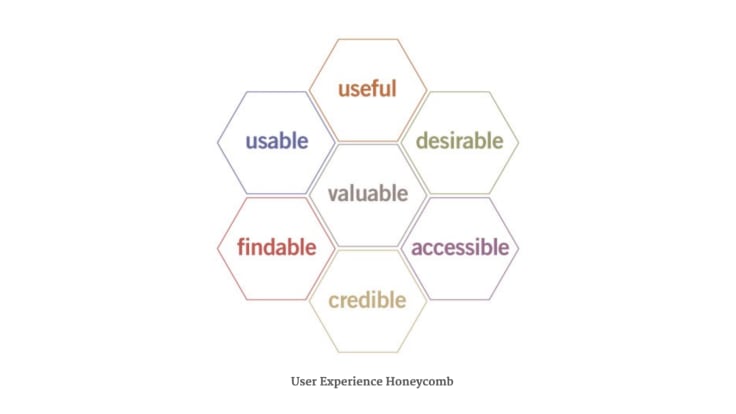
- 28th Jan '23
- DynoMatrix
- 5 minutes read
- Autor: DynoMatrix
10 Methods for enhancing Site User Experience - DynoMatrix
User experience (UX) is a critical aspect of website design and development. A website with poor UX can result in high bounce rates, low conversion rates, and ultimately, a negative impact on your business. In contrast, a website with great UX can lead to increased engagement, higher conversion rates, and finally, better business results. In this blog post, we will explore 10 methods for enhancing site user experience.
-
Make Navigation Intuitive One of the most important aspects of UX is making sure that your website is easy to navigate. Navigation should be intuitive and self-explanatory, allowing users to quickly find what they are looking for without having to spend too much time searching. To achieve this, consider using a clear and consistent navigation structure, such as a top navigation bar or a side navigation menu. Additionally, consider using breadcrumbs to help users understand where they are on the website and how to get back to previous pages.
-
Optimize for Mobile With the increasing use of mobile devices to access the internet, optimizing your website for mobile is crucial. This means designing and developing your website with a responsive layout that adapts to different screen sizes and resolutions. Additionally, consider using a mobile-first design approach, where the mobile version of the website is the primary focus and the desktop version is an afterthought.
-
Use High-Quality Images and Videos Images and videos are powerful tools for enhancing user experience. They can help to break up text and make a website more visually appealing. Additionally, they can convey information in a way that text alone cannot. When using images and videos on your website, make sure they are of high quality and that they load quickly.
-
Make Content Scannable Users often scan a website rather than reading every word. To make your content scannable, use headings, subheadings, bullet points, and other formatting tools to break up the text and make it easy to scan. Additionally, use short paragraphs and sentences to make the text more manageable.
-
Use White Space Effectively White space, also known as negative space, is the area around and between elements on a web page. It is an important aspect of design as it can help to create a visual hierarchy and make a website more visually appealing. When designing your website, make sure to use white space effectively to create a clean and uncluttered look.
-
Make Forms Easy to Complete Forms are a necessary part of many websites, but they can be frustrating for users if they are not designed well. To make forms easy to complete, consider using clear and concise labels, providing clear instructions, and using appropriate input fields. Additionally, consider using inline validation to provide immediate feedback to users, and make sure that the form is mobile-friendly.
-
Use Microinteractions Microinteractions are small interactions that take place on a website, such as a button hover effect or a progress bar. They can be used to enhance the user experience by providing feedback, guiding users through a process, and making the website more engaging. When designing your website, consider using micro-interactions to add an extra layer of interactivity.
-
Make Loading Times Fast Website loading times are critical to user experience. Users expect a website to load quickly and will often leave if it takes too long. To make your website load fast, consider optimizing images and videos, minifying code, and using a Content Delivery Network (CDN). Additionally, consider using tools like Google PageSpeed Insights to analyze and improve your website's loading times.
-
Use A/B Testing A/B testing is a method of comparing two versions of a web page to see which one performs better. It can be a powerful tool for enhancing user experience by allowing you to test different design elements and see which ones have the greatest impact. Some elements you may want to test include the layout, color scheme, navigation structure, and calls to action. By using A/B testing, you can make data-driven decisions about your website's design, leading to a better user experience.
-
Make Use of Analytics
Analytics is a powerful tool for understanding how users interact with your website. By using analytics, you can track user behavior, such as which pages are most popular, how long users stay on the website, and where they are coming from. This information can be used to make informed decisions about your website's design, such as where to place calls to action, how to improve the navigation structure, and which pages need to be optimized
In addition to traditional means of customer communication such as FAQ pages, companies can also implement chatbots to improve accessibility and user experience. Chatbots can handle frequently asked questions, assist users in navigating the website, and even assist with sales. While chatbots are not a complete solution for user experience, they do provide an additional communication channel for customers who prefer using them.
Create your free chatbot today and enjoy a 30-day free trial
In conclusion, enhancing site user experience is an ongoing process that requires constant attention. By following the methods outlined in this blog post, you can improve the usability of your website, increase engagement, and ultimately, improve business results. Remember, it's not about making a website look good but to make it easy to use. Always keep your user in mind and keep testing, testing, testing.
Get your 24 hours Customer service Agent NOW
Deploy DynoMatrix Service Bot today and collect leads and serve your website visitors hassle-free 24./7
- Get unlimited data upload
- Unlimited usage to all products
- Unlimited leads to find

